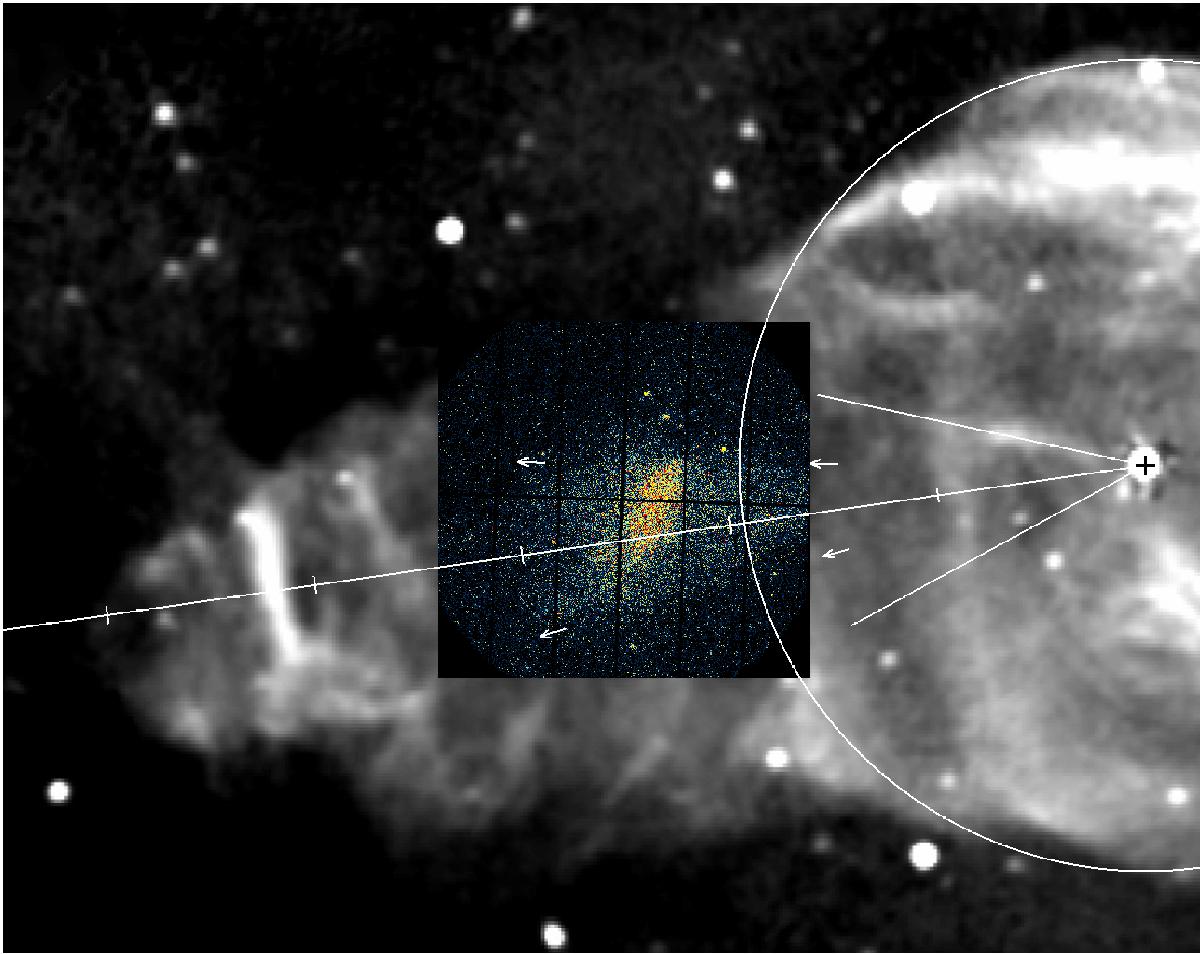Jets of SS 433 on scales of dozens of parsecs
Abstract
Context. The radio nebula W 50 harbours the relativistic binary system
Aims: To disentangle the roles of these components, we study the physical conditions of the propagation of the jets of SS 433 inside W 50 and determine the deceleration of the jets.
Methods: We analysed the morphology and parameters of the interior of W 50 using the available observations of the eastern X-ray lobe, which trace the jet. In order to estimate deceleration of this jet, we devised a simplistic model of the viscous interaction of a jet, via turbulence, with the ambient medium. This model fits mass entrainment from the ambient medium into the jets of the radio galaxy
Results: X-ray observations suggest that the eastern jet is hollow, persists through W50, and is recollimated to the opening angle of 30°. From the thermal emission of the eastern X-ray lobe, we determine a pressure of P 3 × 10-11 erg/cm3 inside W 50. In the frame of a theory of the dynamics of radiative supernova remnants and stellar wind bubbles, in combination with other known parameters this pressure restricts the origin of W 50 to a supernova occuring 100 000 yr ago. Also, this pressure in our entrainment model gives a deceleration of the jet by 60% in the bounds of the spherical component of W 50, of radius 40 pc. In this case, the age of the jet should be ≪27 000 yr so as to satisfy the sphericity of W 50. The entrainment model comes to the viscous stress in a jet of a form σ = αP, where the viscosity parameter α is predefined by the model.
- Publication:
-
Astronomy and Astrophysics
- Pub Date:
- March 2017
- DOI:
- 10.1051/0004-6361/201629256
- arXiv:
- arXiv:1607.02043
- Bibcode:
- 2017A&A...599A..77P
- Keywords:
-
- ISM: bubbles;
- ISM: supernova remnants;
- ISM: individual objects: W50;
- X-rays: individuals: W50;
- ISM: jets and outflows;
- turbulence;
- Astrophysics - High Energy Astrophysical Phenomena;
- Astrophysics - Solar and Stellar Astrophysics
- E-Print:
- 14 pages, 4 figures
